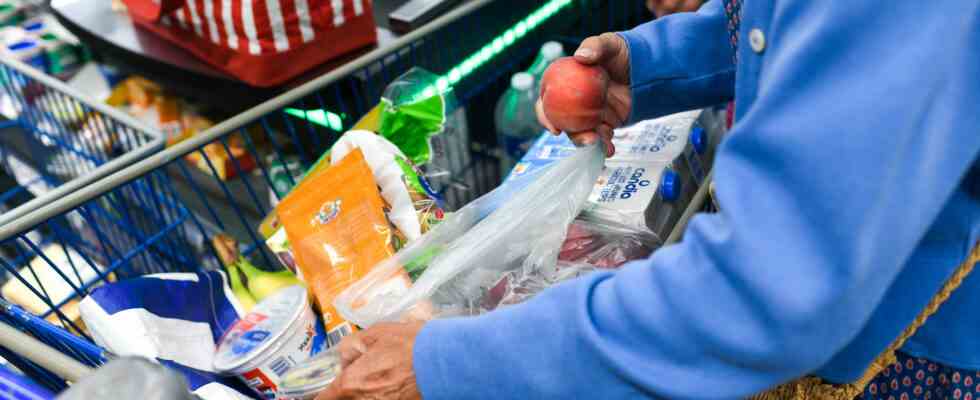Status: 06.01.2023 11:29 a.m
Inflation in the eurozone eased further towards the end of the year. Consumer prices rose by 9.2 percent, less than expected. The core inflation rate, on the other hand, increased.
Inflation in the eurozone eased more than expected in December. Consumer prices rose by 9.2 percent compared to the same month last year, according to an initial estimate from the statistics office Eurostat. Economists had expected an average rate of 9.5 percent in December. In November, the inflation rate was still 10.1 percent.
Core inflation rate rises to 5.2 percent
The core inflation rate excluding energy and food, on the other hand, rose from 5.0 percent to 5.2 percent. Economists had expected 5.1 percent. Economists are currently paying particular attention to this figure because it gives an indication of how strongly companies are passing on cost increases to consumers. This in turn can result in so-called second-round effects in the form of higher wage demands. Experts speak of a price-wage spiral.
Energy prices fueled inflation again in December, albeit not quite as sharply. Energy prices rose by 25.7 percent year-on-year after 34.9 percent in November. Food, alcohol and tobacco prices rose 13.8 percent from 13.6 percent in November. Non-energy industrial goods prices rose 6.4 percent in December. In November, the increase was 6.1 percent. Services rose 4.4 percent in December after 4.2 percent in November.
France’s central bank chief expects interest rate hikes to end in summer
For the first time since mid-2021, inflation in the euro area fell in November – to 10.1 percent. For this reason, the European Central Bank (ECB) took its foot off the accelerator somewhat in December and, after two jumbo rate hikes of 0.75 percentage points each, raised key interest rates by 0.50 percentage points. ECB President Christine Lagarde recently raised the prospect of further interest rate hikes and signaled that the rate of hikes by half a percentage point would probably be maintained at the next meetings.
France’s central bank chief Francois Villeroy de Galhau expects ECB interest rates to finally peak in the summer. “It would be desirable to get the right ‘closing rate’ by next summer,” he said in a New Year’s speech yesterday. However, it is too early to say how much.
The key interest rate in the euro area, which was frozen at a record low of zero percent for years, is now 2.50 percent. The European monetary authorities will announce their first interest rate decision of the new year on February 2nd. The ECB is aiming for an inflation rate of two percent as the ideal value for the euro zone. It is currently still a long way from this goal.
Producer prices in Europe and inflation in Germany are rising at a slower rate
Producer prices had already signaled an ebb in the wave of inflation yesterday. Manufacturers in the euro zone have recently stopped turning the price screw quite so vigorously: according to Eurostat, producer prices in industry rose by 27.1 percent in November compared to the same month last year. In October the increase was still 30.5 percent and in September it was 41.9 percent.
In the energy sector there was an increase of 55.7 percent in November compared to the same month last year, after an increase of 64.9 percent in October. Excluding expensive energy, producer prices in industry rose by just 13.1 percent. In October, this value was still 14.0 percent. In the statistics, the prices are listed from the factory gate – i.e. before the products are further processed or sold. They are therefore regarded as an early indication of the development of consumer prices.
These had recently also risen less sharply in Germany. The inflation rate was 8.6 percent in December, as the Federal Statistical Office announced in an initial estimate at the beginning of the year. Previously, inflation in this country had been in double digits for three months in a row. In November, the inflation rate fell for the first time since July and stood at 10.0 percent. Overall, German consumer prices rose by 7.9 percent in 2022, more than at any time since the Federal Republic came into existence.

